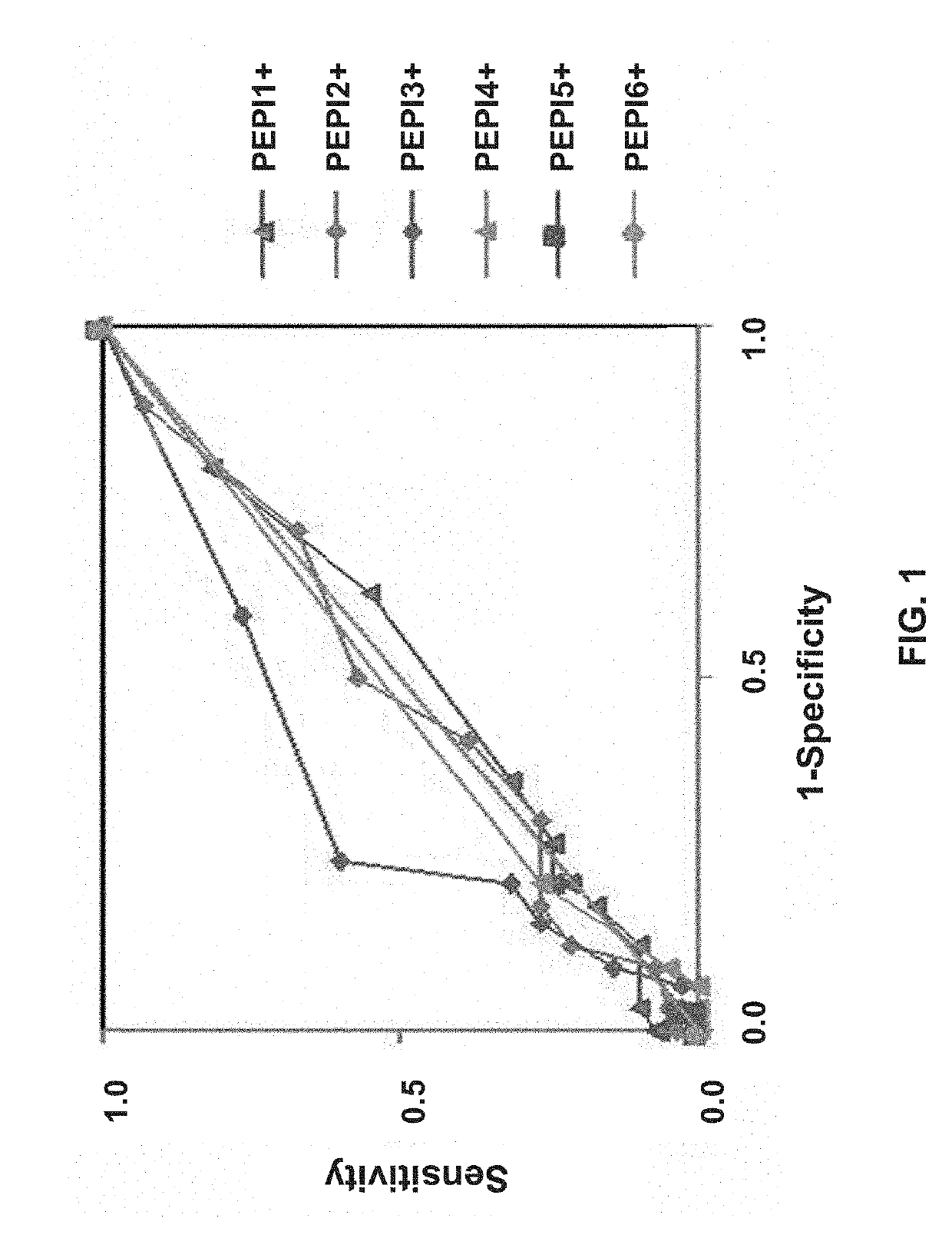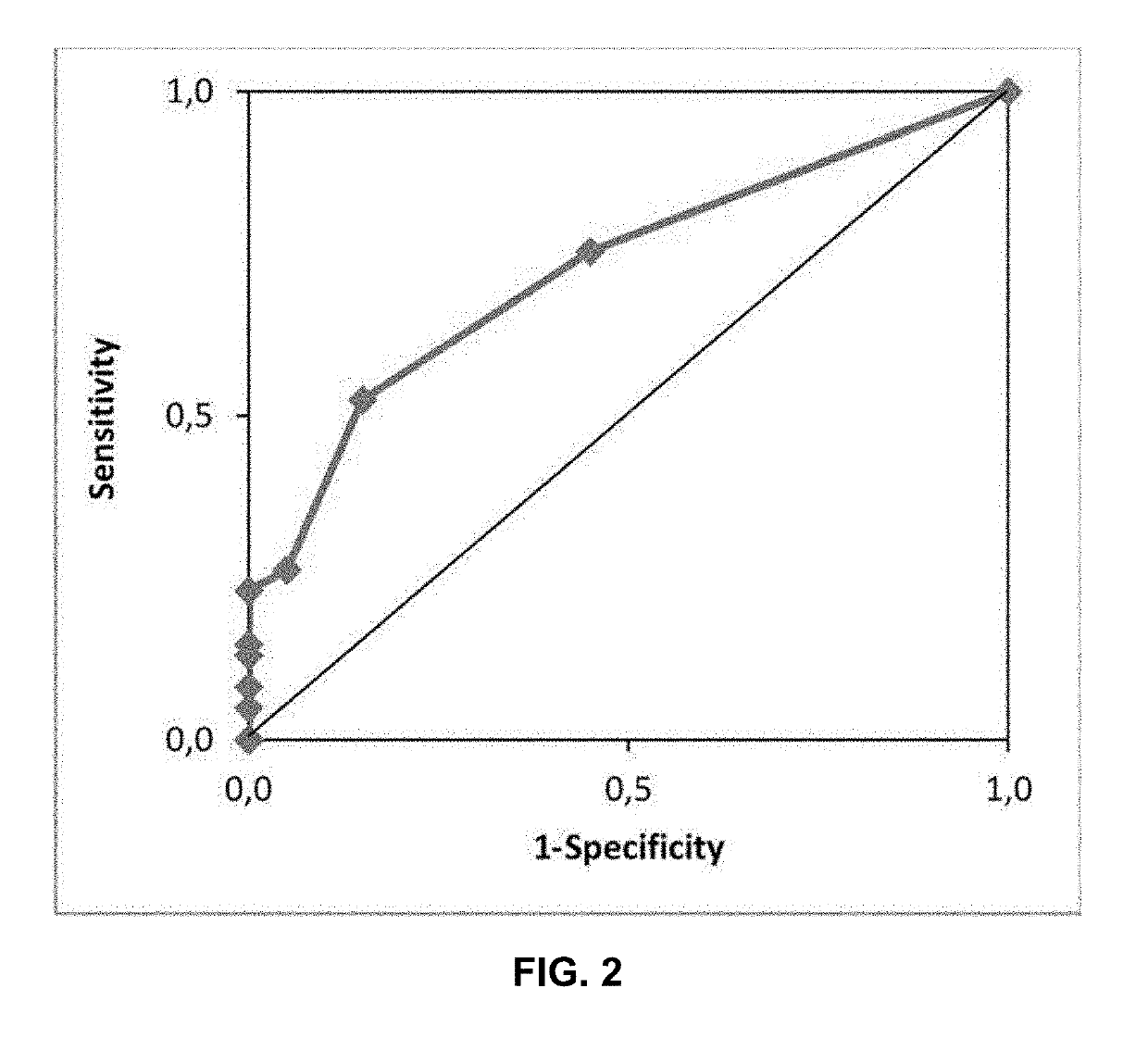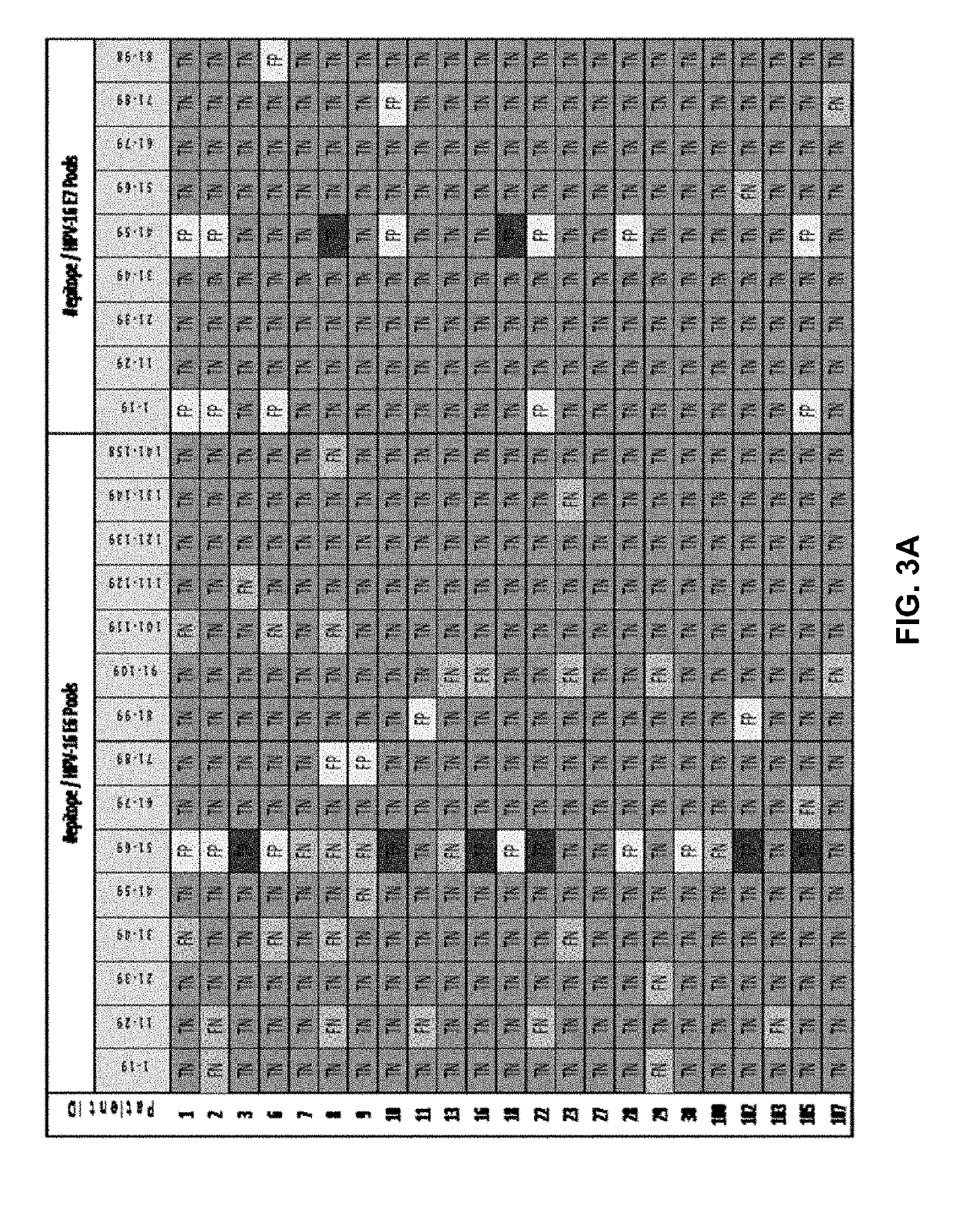Vaccine
a vaccine and polypeptide technology, applied in the field of vaccines, can solve the problems of inability to scale up hla-specific cancer vaccines to large populations, poor immunogenicity of current cancer vaccines that induce new immune responses, and inability to benefit most patients
- Summary
- Abstract
- Description
- Claims
- Application Information
AI Technical Summary
Benefits of technology
Problems solved by technology
Method used
Image
Examples
example 1
HLA-Epitope Binding Prediction Process and Validation
[0270]Predicted binding between particular HLA and epitopes (9 mer peptides) was based on the Immune Epitope Database tool for epitope prediction (www.iedb.org).
[0271]The HLA I-epitope binding prediction process was validated by comparison with HLA I-epitope pairs determined by laboratory experiments. A dataset was compiled of HLA I-epitope pairs reported in peer reviewed publications or public immunological databases.
[0272]The rate of agreement with the experimentally determined dataset was determined (Table 2). The binding HLA I-epitope pairs of the dataset were correctly predicted with a 93% probability. Coincidentally the non-binding HLA I-epitope pairs were also correctly predicted with a 93% probability.
TABLE 2Analytical specificity and sensitivity of the HLA-epitopebinding prediction process.True epitopes (n = 327)False epitopes (n = 100)HLA-epitope pairs(Binder match)(Non-binder match)HIV91% (32) 82% (14)Viral100% (35) 100...
example 2
Epitope Presentation by Multiple HLA Predicts Cytotoxic T Lymphocyte (CTL) Response
[0275]The presentation of one or more epitopes of a polypeptide antigen by one or more HLA I of an individual is predictive for a CTL response was determined.
[0276]The study was carried out by retrospective analysis of six clinical trials, conducted on 71 cancer and 9 HIV-infected patients (Table 4)1-7. Patients from these studies were treated with an HPV vaccine, three different NY-ESO-1 specific cancer vaccines, one HIV-1 vaccine and a CTLA-4 specific monoclonal antibody (Ipilimumab) that was shown to reactivate CTLs against NY-ESO-1 antigen in melanoma patients. All of these clinical trials measured antigen specific CD8+ CTL responses (immunogenicity) in the study subjects after vaccination. In some cases, correlation between CTL responses and clinical responses were reported.
[0277]No patient was excluded from the retroactive study for any reason other than data availability. The 157 patient datase...
example 3
Validation of the ≥1 PEPI3+ Test
[0282]The test cohort of 81 datasets from 51 patients was used to validate the ≥1 PEPI3+ threshold to predict an antigen-specific CTL response. For each dataset in the test cohort it was determined whether the ≥1 PEPI3+ threshold was met (at least one antigen-derived epitope presented by at least three class I HLA of the individual). This was compared with the experimentally determined CTL responses reported from the clinical trials (Table 7).
[0283]The clinical validation demonstrated that a PEPI3+ peptide induce CTL response in an individual with 84% probability. 84% is the same value that was determined in the analytical validation of the PEPI3+ prediction, epitopes that binds to at least 3 HLAs of an individual (Table 3). These data provide strong evidences that immune responses are induced by PEPIs in individuals.
TABLE 7Diagnostic performance characteristics of the ≥1 PEPI3+ Test (n = 81).Performance characteristicDescriptionResultPositive100% [A / ...
PUM
 Login to View More
Login to View More Abstract
Description
Claims
Application Information
 Login to View More
Login to View More - R&D
- Intellectual Property
- Life Sciences
- Materials
- Tech Scout
- Unparalleled Data Quality
- Higher Quality Content
- 60% Fewer Hallucinations
Browse by: Latest US Patents, China's latest patents, Technical Efficacy Thesaurus, Application Domain, Technology Topic, Popular Technical Reports.
© 2025 PatSnap. All rights reserved.Legal|Privacy policy|Modern Slavery Act Transparency Statement|Sitemap|About US| Contact US: help@patsnap.com



